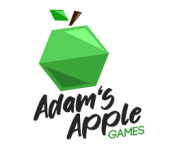Player Portraits
- Jason
- Nov 1, 2020
- 2 min read
Updated: Nov 15, 2020

Pattern recognition drives the human brain. Our minds find comfort in the familiar, seek the stimulation of new experiences, and can be paralyzed by surprises. A balanced gaming User Interface will incite all these reactions appropriately: you should know where you are in the game, see the possibilities of a new play or strategy, and feel the drama of a close game or exceptionally good play.

One of the first patterns humans learn to recognize is the human face. In social deduction games, bluffing games, and roleplaying games, how we control our expressions and understand the guise of others is an essential skill and half the fun. People look for faces everywhere and desire information from them. Sovranti strives to preserve and prioritize human presence and interaction in online board games. How we represent players and the data associated with them is critical to our mission. The new UI will start helping human “readability” via emotes/animations, but player portraits primarily will focus on game information unique to the player.
Players are represented in multiple ways in the Sovranti platform: avatars at the table, pawns on the scoreboard, names in the chat window and voices in the game sounds. In our upcoming UI update, all those elements will be unified in the player portraits. Taking lessons from our last blog, Information Overload, we’ve compartmentalized critical information about the individual. Their name, their avatar, what color their pieces are on the board, who’s turn it is, and voice controls are placed along the right edge. This information is consistent with whichever game you’re playing on the platform to keep it intuitive and available.

Depending on the title, there are tons of options for additional information that can be wrapped up in the player portrait. We deliberated on what else should be included. One in particular, players requested was running point totals. Though one of the key advantages of digital platforms is having the “crunchy” bits of math added up for you, there gets to a point where it takes away from the vision intended by the board game designer. This is a philosophical debate we include them in: what can Sovranti get out of the way so players can enjoy the game more? Will giving you all the answers take away some of the skill, strategy, or fun?
How people want to play and what the designers/publishers intended is always in our thought processes. No where is that more an issue than in our next UI topic: Touch vs Keyboard.
Release Updates
Publisher: Magpie Games
Sovranti Developer: Eric
Eric has started the table layout and game function. All core spells have been implemented!

Publisher: Adam's Apple Games
Sovranti Developer: Paul
Paul continues the work on Planet Unknown implementing solo mode and event cards. Event cards added challenging new elements like regression of resource tracks, and restrictions to how tiles can be placed.
Things to look forward to:
Solo mode, 2 player mode & event card testing.


.png)







Comentarios